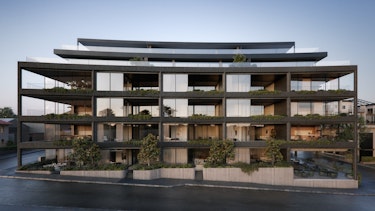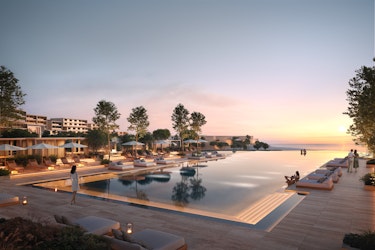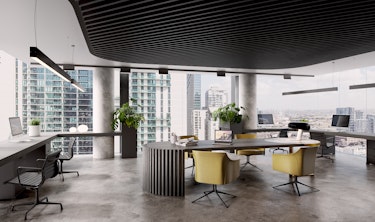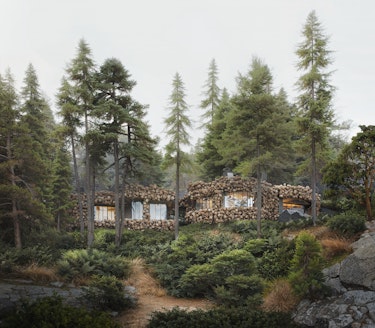In the fast-evolving world of real estate, the rules of engagement have changed. By 2025, the market for mixed-use and hospitality projects in regions like the Middle East, Australia, and the UK has become more competitive — and more sophisticated — than ever before. Today’s investors, tenants, and guests are not simply buying into square footage or amenities; they are seeking identity, experience, and emotional connection.
This shift has profound implications for how projects are conceived, branded, and marketed. Traditional architectural visuals — no matter how technically impressive — are no longer sufficient to capture attention or drive value. Instead, story-driven visual content has emerged as a strategic asset, capable of translating a project’s vision into a compelling narrative that resonates with diverse audiences and delivers measurable business results.
For developers, marketing agencies, architectural bureaus, and interior designers, this evolution demands a new approach: one that fuses design intuition with commercial logic, and aesthetics with storytelling. The future belongs to those who can make their projects not only visible, but unforgettable.
Selling with Emotion and Intent
Mixed-use and hospitality developments are, at their core, about people—how they live, work, interact, and dream. The most successful projects are those that can evoke emotion and anticipation before a single guest check in or a retailer opens its doors. This is where emotionally intelligent visual content becomes indispensable.
Instead of relying solely on static renders, the developer partnered with a creative content studio to create a cinematic narrative: a day-in-the-life film that followed future residents and visitors through the precinct’s parks, cafes, co-working spaces, and boutique hotels. The visuals were meticulously designed to reflect the project’s brand values — community, innovation, and sustainability — while inviting viewers to imagine themselves as part of the story. The result? A 40% increase in qualified inquiries during the pre-sales phase, and a social media campaign that generated organic buzz far beyond the local market.
This approach is not about superficial embellishment. It is about aligning every visual asset with the project’s commercial objectives: accelerating absorption, achieving premium positioning, and building enduring brand equity.

Visuals as Strategic Differentiators
In crowded markets, differentiation is everything. For hospitality brands, the challenge is not just to showcase amenities, but to articulate a unique identity that stands out in a sea of sameness. Visual storytelling when executed with strategic intent becomes a powerful differentiator. Every asset, from digital walkthroughs to interactive social stories, reinforce the brand’s promise of “modern hospitality rooted in tradition.

Communicating Commercial Logic Through Story
For architectural bureaus, the value of story-driven visuals extends beyond client presentations. In a world where design proposals must compete for attention and investment, the ability to communicate not just what a building will look like, but how it will function and feel, is critical.
One example, develop interactive narratives that mapped the user journey — from arrival to workspace to leisure zones — highlighting how each design decision supported operational efficiency, tenant wellbeing, and long-term value creation.
Investors and stakeholders will be able to grasp the project’s full potential, accelerating approvals and unlocking additional funding. For the architects, the partnership with a content studio that understand both design language and business imperatives prove invaluable — not just in winning projects, but in building lasting client relationships.

Measurable Results, Enduring Brands
The business case for strategic visual storytelling is robust and quantifiable. Across markets and asset classes, projects that invest in cohesive, emotionally resonant visual narratives consistently outperform those that rely on traditional renderings alone.
Shorter Sales Cycles: Projects with immersive, story-driven content saw sales and leasing cycles reduced by up to 30%, as buyers and tenants connected more quickly and deeply with the vision.
Increased Engagement: Digital campaigns featuring narrative visuals generated 2–3x higher engagement rates compared to standard imagery, translating into more qualified leads and higher conversion rates.
Stronger Brand Recognition: Consistent storytelling across all touchpoints — web, social, print, and experiential — helped clients establish distinctive brand identities that endured beyond the initial launch.
Enhanced ROI: By aligning visual content with commercial goals, clients maximized the impact of their marketing spend, achieving higher returns and greater long-term value.
These outcomes are not accidental. They are the result of a deliberate, strategic approach to content creation — one that places storytelling at the heart of every visual asset.

The era of “beautiful visuals” as a marketing endpoint is over. In today’s market, visuals must do more than capture attention; they must capture imagination, drive action, and deliver business results. For developers, marketers, architects, and designers aiming to compete at the highest level, story-driven visual content is not a luxury — it is a commercial imperative.
At CUUB Studio, we see ourselves not just as visualizers, but as strategic partners. Our role is to help clients unlock the full potential of their projects by crafting content that works — as a lever for sales, branding, and long-term value creation. We bring together design intuition, narrative expertise, and commercial acumen to deliver assets that are as purposeful as they are beautiful.
